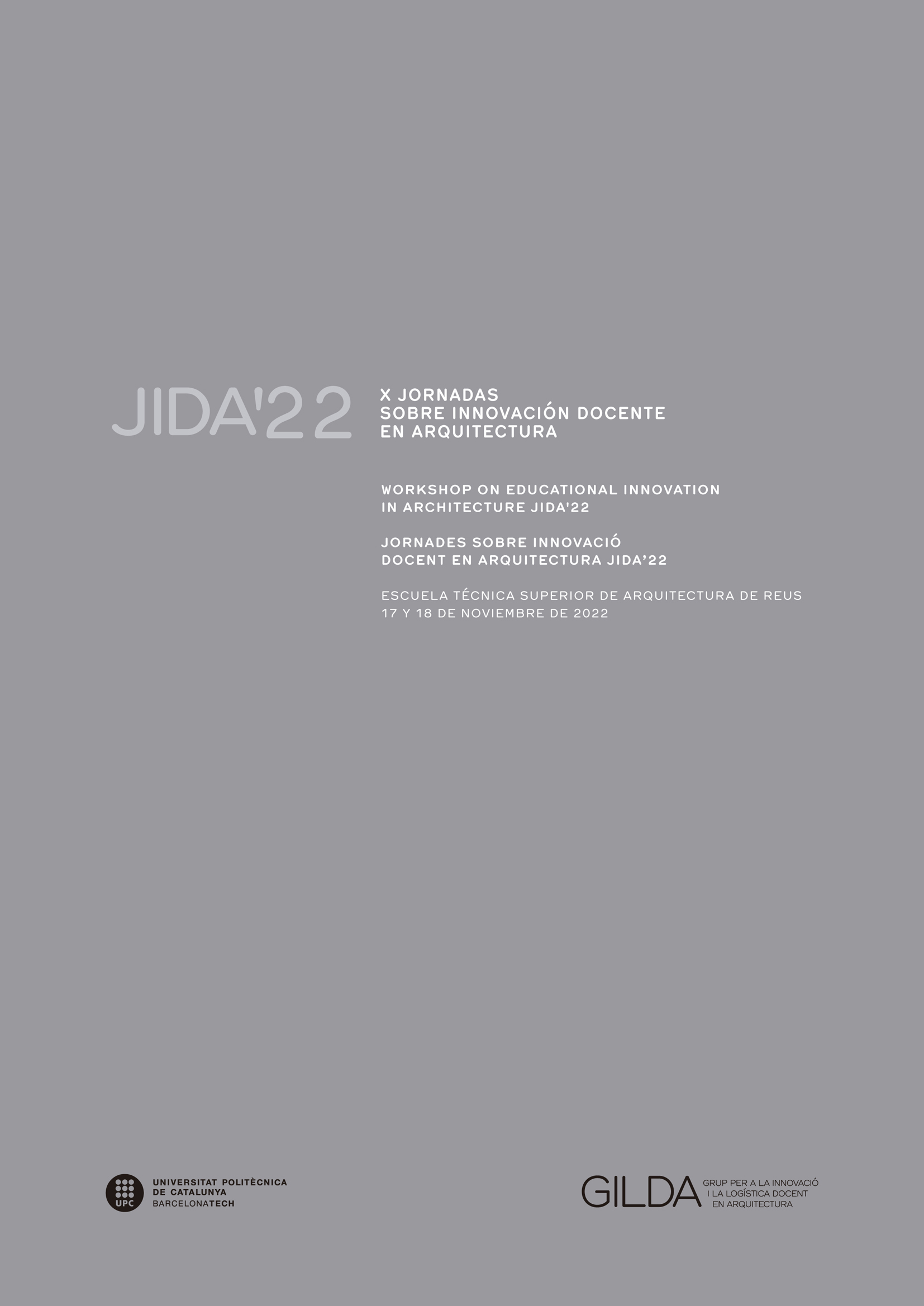Body extensions
DOI:
https://doi.org/10.5821/jida.2022.11600Keywords:
drawing, body, extensions, cardboard, geometryAbstract
If we think of the human body as the origin and end of architecture (origin as the starting point of the needs that we have to cover in our relationship with the environment, and end as the receiver of the environmental and functional conditions that we create in response to these needs) , we cannot ignore the need to project from our bodies (project from the fact of living). That is why we proposed to the students of introduction to architectural projects an exercise initially planned in two phases: a first work of recognition, learning and drawing of the body, to then ask them to build an intermediary artifact between their body -any part of it- and the environment in which they live, based on a function, invented or not, and if possible not exempt from playful aspects, where the designer himself would be the user. The question to answer was: how do we complete our body in response to a new need?
References
BEATE REIMANN, Sandra. (c.2019). “How Rebecca Horn expanded the boundaries of human body” en ArtBasel, <https://www.artbasel.com/news/rebecca-horn-museum-tinguely-koerperfantasien-art-basel> [Consulta: 15 septiembre 2022]
GALAN SERRANO, Julia. (2010). “Mujeres artistas y arquitectura” en Asparkía, 21, pp. 25-46.
CLARK, Lygia; BUTLER, Cornelia H.; PÉREZ-ORAMAS, Luis; BESSA, Antonio Sergio. (2014). Lygia Clark: The abandonment of Art, 1948-1988. Museum of Modern Art, New York.
GUILLEM-BALMES, Ramon Guillem; PERELLÓ, Antònia Maria. (2017). Agafeu-vos de la mà i pugeu a l’infern. Catálogo exposición, M/A/C/ Mataró Art Contemporani.
HORN, Rebecca; VETESSE, Angela; CAMARTIN, Iso. (2009). Rebecca Horn: Fara Morgana. Milano: Charta.
HAMAYA, Hiroshi. (1956). Yukiguni. Grey Tiger Books.
“Lygia Clark and her "Abandonment" in MoMA. Youtube <https://www.youtube.com/watch?v=HZ4TXDlUwQc> [Consulta: 15 de agosto de 2022]
PALLASMAA, Juhani. (2012). La mano que piensa (Sabiduría existencial y corporal en la arquitectura). Barcelona: Editorial Gustavo Gili.
PERELLÓ, Anònia M.; FORTUNY, Jaume; VALERA, Albert; CERVANTES, Sensi. (2016). Ramon Guillem-Balmes. Barcelona: Edicions de l’Escola Massana.
RUDOFSKY, Bernard. (1973). Arquitectura sin arquitectos. Buenos Aires: Editorial Universitaria de Buenos Aires.
STERBAK, Jana; DINKLA, Söke; FRANKE, Marietta; KRAJEWSKI, Michael; NIEVERS, Lena. (2017). Life Size. Verlag für moderne Kunst.
VAQUERO DÍAZ, Roma. (2020). ”Performance y cuerpo extendido en la piel de Rebecca Horn” en Mundo Performance, 10 de junio. <https://mundoperformance.net/2020/06/10/performance-y-cuerpo-extendido-en-la-piel-de-rebecca-horn/> [Consulta: 15 septiembre 2022]
“The bionic woman” en The Guardian. (23 de mayo de 2005). <https://www.theguardian.com/artanddesign/2005/may/23/art> [Consulta: 19 de septiembre de 2022]



















